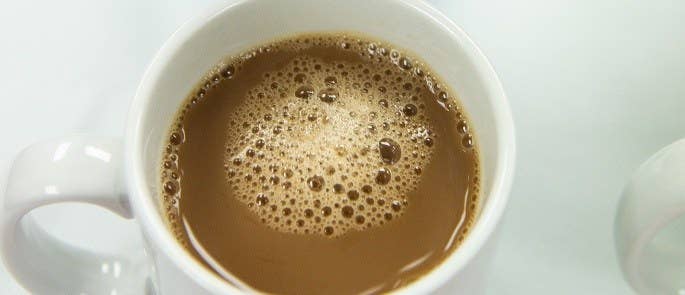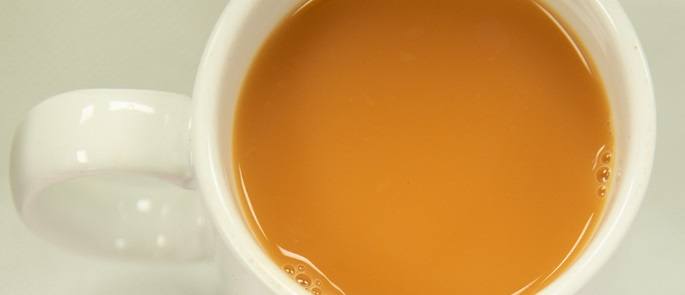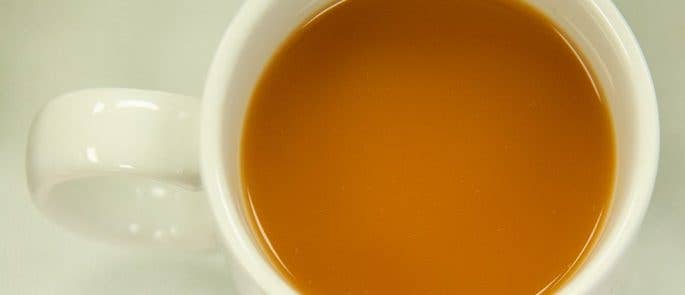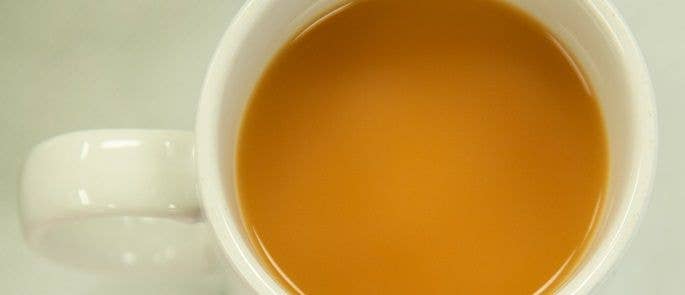Guide to Alternative Milk: Food Safety, Nutritional Benefits & A Good Brew!
There are a wide range of alternative milk on the market, including soy, almond, rice, and all flavours in between. People usually turn to these milk options for many reasons: they may be lactose intolerant, have a milk allergy, follow a vegan lifestyle, or may simply not like the taste of dairy milk.
If you’re thinking of trying non-dairy milk, or you’re an alternative milk veteran, have you ever wondered:
- How certain non-dairy milks taste?
- Whether they curdle in tea and coffee?
- Why certain milks curdle in coffee and others don’t?
- If non-dairy milk needs to be kept in the fridge?
- What the health benefits are of using non-dairy milk?
What if someone could answer all these for you?
We scoured the supermarkets and bought a range of popular non-dairy milks to answer these questions. We examined storage labels and use by dates and carried out our very own curdling experiment. This involved testing tea with the milk added at the end, coffee with the milk added at the end, and coffee with the milk added before the water.
Most of the alternative milks we’ve tested are made by Alpro as they tend to be widely available in supermarkets and convenience stores. This article isn’t sponsored by Alpro (but maybe it should be!). There are a range of brands available and we know people have different preferences, so if you would like to see your favourite listed, let us know in the comments.

Our testing team: Arron, Ellie, and Jordana
Contents
Use the links below to jump to certain sections of the article:
Soy Milk
Soy milk is a plant-based drink that’s made from either soy beans or soy protein isolate. It’s usually produced by soaking and grinding soybeans, boiling the mixture, and filtering out the remaining particulates. Thickeners and vegetable oils are often added to improve the taste and texture. Light/unsweetened soy milk typically contains fewer calories, sugars and/or fats than the original.
What does soy milk taste like?
Soy milk typically has a mild and creamy flavour, but this can vary between brands. It’s typically sweeter than other milk alternatives. If you want dairy free milk that tastes like milk, this is probably your best option.
How long does soy milk last?
Soy milk is kept on supermarket shelves and usually has a long expiry date. However, once you’ve opened it, you shouldn’t keep it for longer than 5 to 7 days. Keep it tightly sealed in the fridge.
If soy milk develops an odour, an off flavour, or a change in appearance, then you should get rid of it.
Does soy milk curdle in coffee and tea?
Curdling is a common problem with non-dairy milk. This is because liquids like coffee are more acidic than soy milk so act as a coagulant, creating elements of curdled soy in the cup. The temperature of a hot coffee further accelerates this process.
In our experiment, we found that both soy and light soy milk didn’t curdle in tea.

Tea made with soy milk
However, we found that when we made coffee with the milk added at the end, the original soy milk had a film on top and the light soy milk curdled.

Coffee made with soy milk
The best way to prevent curdling is to warm the soy milk slowly and then gradually add the coffee and water in afterwards. Adding the soy milk to water before adding the coffee also helps to minimise the chances of curdling. According to Caleb Backe from Maple Holistics, different brands curdle more than others depending on the calcium levels in the milk. Therefore, using brands fortified with calcium should reduce the risk of the product curdling in your drink.
If you’re interested in more information about soy milk in coffee, check out this article from Buzzfeed.
Does soy milk need to be refrigerated?
Soy milk doesn’t need to be kept in the fridge if it’s not open. However, once you open it, you need to refrigerate it and consume it within 5 to 7 days.
Can you freeze soy milk?
Freezing soy milk isn’t recommended by manufacturers: freezing it often makes it lose its texture and some of its flavour. As a result, you may not enjoy soy milk as much after freezing and thawing as you would before doing so. However, soy milk can be frozen without affecting its safety or nutritional value.
What are the benefits of soy milk?
In terms of nutrition, soy milk is the closest non-dairy substitute for cow’s milk. This is because it contains a similar amount of protein to cow’s milk, but it contains half the amount of fat, calories, and carbohydrates. An average 100ml portion contains 44 calories, 1.9g of fat, and 3g of carbohydrate. The light option contains 27 calories, 1.2g of fat and 1.6g of carbohydrate (measures taken from a carton of Alpro Soya & Soya Light Drink).
Furthermore, it contains essential amino acids which can only be obtained through diet choices. Many soy milks are also fortified to contain calcium and vitamins. Whilst light soy is fewer in calories, the vitamins and minerals, according to the Alpro product, are the same.
However, many people are concerned about the effects that soy has on the body, arguing that the isoflavones in soy can affect oestrogen receptors and hormones. Despite this, there’s no concrete evidence to suggest that moderate amounts of soy will cause particular harm.
Is there a difference between soy and soya milk?
No, both terms refer to the same product. It’s just a matter of personal preference which term you use.
Almond Milk
Almond milk is an alternative that’s made with either ground whole almonds and water or almond butter and water. You can add it to tea and coffee, use it for cereal, and use it in cooking and baking.
What does almond milk taste like?
Almond milk has a light texture and a sweet, nutty flavour. Because it’s made with ground almonds and water, some people think that it has a watered-down quality to it.
How long does almond milk last?
Similar to soy milk, almond milk has a long shelf life and can be kept out of the fridge for a long time. However, once you open it, you must drink it within 7 days and keep it in the fridge.
Does almond milk curdle in coffee and tea?
We used both almond milk and unsweetened almond milk in our experiment. We found that neither sweetened nor unsweetened almond milk curdled in tea.

Tea made with almond milk
However, we found that both sweetened and unsweetened curdled in the coffee, regardless of whether we added the milk first or last. Out of our whole experiment, unsweetened almond milk was the one that curdled most.

Coffee made with almond milk

Coffee made with unsweetened almond milk
Again, this is likely due to the acidity and temperature of the coffee and how it accelerates the curdling process. Similar to soy milk, try warming the milk slightly before adding the coffee.
Does almond milk need to be refrigerated?
Almond milk doesn’t need to be kept in the fridge if it’s not open. However, once you open it, you need to refrigerate it and consume it within 5 to 7 days. If you buy a carton that’s already refrigerated in the supermarket, then you should keep it in the fridge at home.
Can you freeze almond milk?
Although it doesn’t affect the nutritional value, freezing almond milk isn’t recommended. This is because freezing and thawing will cause the milk to separate and will disrupt its taste and texture.
What are the benefits of almond milk?
Unlike soy milk, almond milk isn’t as close nutritionally to cow’s milk. However, almond milk is naturally rich in vitamins and minerals, especially vitamin E. Furthermore, compared to cow’s milk, almond contains less than a quarter of the calories and less than half the fat. Typically almond milk contains 30 calories per 100ml, 1.1g of fat and 2.4g of sugar.
Unsweetened almond milk contains negligible amounts of carbohydrates. As a result, it doesn’t cause a spike in blood sugar levels, making it suitable for diabetics and those on low-carb diets. An average 100ml portion of almond milk contains 13 calories and 1.1g of fat (measures taken from Alpro Unsweetened Drink).
However, because almond milk is mostly made with water, it’s a much less concentrated source of the beneficial elements in almonds. So, the amount of protein, fibre, and healthy fats is lower than it would be in whole almonds.
Rice Milk
Rice milk is typically made up of white or brown rice, water, salt, and occasionally a little bit of oil. It’s made by pressing rice through a mill and using diffusion to strain out the pressed grains. These are then mixed with the other ingredients.
What does rice milk taste like?
Rice milk has a mild taste and is usually naturally sweet in flavour. Because of its minimal ingredients, rice milk has a watery consistency.
How long does rice milk last?
Like most milk substitutes, you can store rice milk in the cupboard until you open it. Once you’ve opened it, you must keep it in the fridge and consume within 7 to 10 days.
Does rice milk curdle in coffee and tea?
In our experiment, we found that rice milk curdled slightly in tea. This was the only non-dairy milk to do so in tea.

Tea made with rice milk
We also found that the rice milk developed a film on top of the coffee, both when we put the milk in before the water and when we put it in after.

Coffee made with rice milk
Does rice milk need to be refrigerated?
Like most non-dairy milks, rice milk has a long shelf life and can be kept out of the fridge when it’s unopened. However, when you open it, you must keep it in the fridge and tightly closed.
Can you freeze rice milk?
Manufacturers don’t recommend freezing rice milk. This is likely because it will disrupt the taste and texture of the milk.
What are the benefits of rice milk?
Rice milk is the least allergenic of milk substitutes. This means it’s suitable for people who have allergies or intolerances to dairy, gluten, soy, or nuts.
Rice milk has double the amount of carbohydrates in it than cow’s milk, but considerably less protein and fat. Because of its low protein content, it’s not recommended for growing children, athletes, and the elderly, as they have higher protein requirements.
Rice milk contains an average of 9.5g of carbohydrate per 100ml, 1g of fat, and 47 calories (measures taken from Rice Dream Original Rice Drink). This is much higher in carbohydrates than other milk alternatives. Furthermore, it also has a high glycaemic index (GI), which means it’s quickly absorbed and can cause blood sugar levels to rise rapidly. As a result, it’s not the best non-dairy milk for people with diabetes.
Oat Milk
Oat milk is made from a mixture of oats and water. Manufacturers may also add ingredients such as gums and salt to produce a desirable taste and texture. You can find oat milk in many flavours, including original and chocolate.
What does oat milk taste like?
Oat milk is naturally sweet and mild in flavour and can add a creamy taste to your coffee. It goes well with smoothies and is often thought to be the best non-dairy milk for cereal.
How long does oat milk last?
Oat milk has a long shelf life, so it will keep for a while in your cupboards before you use it. However, like the other milk substitutes, you need to consume it within 7-10 days of opening it.
Does oat milk curdle in coffee and tea?
In our experiment, we found that oat milk didn’t curdle in tea or coffee.

Tea made with oat milk
Oat milk was the only milk in our experiment that didn’t curdle or develop a film when it was in coffee.

Coffee made with oat milk
Does oat milk need to be refrigerated?
You can keep oat milk in your cupboard until you open it. However, once you do so, keep it in the fridge and tightly closed.
Can you freeze oat milk?
Whilst you can freeze oat milk, many people find that it goes grainy once defrosted. Furthermore, it separates because of its tendency to settle easily. Many brands simply state that they can’t guarantee the same quality of taste and texture after freezing and thawing a product.
What are the benefits of oat milk?
Oat milk is often free of many allergens like gluten, lactose, and nuts. However, this isn’t the case for all oat milks, so always check the packaging if you have an allergy.
When oat milk is fortified, it’s rich in vitamin D, iron, calcium, potassium, and fibre. In fact, you can get around 35% of your daily calcium intake and 10% of your daily iron intake from one cup. Of course, this depends on the brand that you choose.
100ml of oat milk contains, on average, 44 calories, 1.5g of fat, and 6.8g of carbohydrate (measures taken from Alpro Original Oat Drink). It’s therefore higher in calories and carbohydrate than other milk substitutes.
Best of the Rest
Of course, there are many other types of non-dairy milk, and it’s personal preference as to which one you prefer to have. Here, we give you an overview of other tasty alternatives.
Coconut Milk
Coconut milk is made from water and the white flesh from brown coconuts. It has a thick consistency, a rich, creamy texture, and a sweet but subtle coconut flavour. 100ml of coconut milk contains, on average, 20 calories, 1g of fat, and 3g of carbohydrate (measures taken from Alpro Original Coconut Drink).
Like most milk alternatives, you can keep coconut milk at room temperature while it’s unopened. However, once you open it, you need to keep it in the fridge and enjoy it within a week.
Coconut milk has many health benefits, including boosting your heart health and immune system. Researchers have also found that it can even contribute to weight loss by increasing insulin sensitivity and accelerating the breakdown of sugars.
Hazelnut Milk
Hazelnut milk is made from roasting hazelnuts, soaking them, blending them, straining them, and mixing them with water. It has a sweet and nutty taste. 100ml of hazelnut milk contains, on average, 29 calories, 1.6g of fat, and 3.1g of carbohydrate (measures taken from Alpro Original Hazelnut Milk).
Like most milk alternatives, you can keep hazelnut milk at room temperature while it’s unopened. However, once you open it, you need to keep it in the fridge and enjoy it within a week.
Hazelnut milk has a number of health benefits. It’s full of vitamin E, which promotes healthy hair and skin and boosts heart health, it’s rich in folic acid, and it contains a lot of plant-based omega-3. Hazelnuts also help to prevent anaemia, cancer, and heart-disease, and are full of protein.
Cashew Milk
Cashew milk is made from a mixture of cashew nuts or cashew butter and water. It’s rich, creamy, sweet, and has a subtle nutty flavour. 100ml of cashew milk contains, on average, 23 calories, 1.1g of fat, and 2.6g of carbohydrate (measures taken from Alpro Original Cashew Drink).
You can keep cashew milk at room temperature before you open it. However, once you open it, you need to keep it in the fridge and enjoy it within a week.
Cashew milk has a naturally low amount of carbohydrates, so it’s suitable for people who have diabetes or who need to reduce their carb and sugar intakes. Furthermore, it has a low glycaemic index (GI) which means it only has a small effect on blood sugar levels. Cashew milk is rich in magnesium and potassium, is a good source of essential fatty acids, and is easy to digest.
Hemp Milk
Hemp milk is made from the seeds of the hemp plant and has a slightly sweet, nutty taste. Its texture is thin and watery and so would be best as a substitute for skimmed milk. 100ml of hemp milk contains, on average, 24 calories, 1.8g of fat, and 4.8g of carbohydrate (measures taken from Alpro Original Hemp Milk).
Hemp milk can be kept at room temperature until you open it. It must then be stored in the fridge and consumed within 7 to 10 days.
Hemp milk is often fortified with calcium, phosphorus, and vitamins A, B12, and D. It contains essential fatty acids, including omega-3, and a 250ml serving contains 50% of our recommended daily intake of omega-3. It’s also naturally free of soy, lactose, and gluten, which makes it a good option for people who are allergic to these things.
What’s the Verdict?
Our taste testers included Arron, a hardened dairy drinker; me, a non-dairy dabbler; and Jordana, a total dairy doubter. The soy and oat options were the front runner for Arron who said “soy strikes me as a weaker version of dairy milk and oat milk might even be enough to make me think twice when I order a latte.” The enthusiasm, however, ended quickly for Arron who concluded that the almond milk variations were not something he “wanted to be involved with ever again.”
I echoed Arron’s thoughts on the oat milk, taking a sip and saying “oooh, it’s just like a cuppa.” However, I won’t be swapping my skimmed milk for the “soy light” and “almond unsweetened” anytime soon as these really lacked flavour for me.
Jordana usually has a selection of alternative milks on the go in the office fridge, so there weren’t too many surprises. However, she did have a significant realisation during the experiment: she’s been making coffee wrong for years!

The Fine Print
- We used 1L cartons of Alpro and Rice Dream for our alternative milk options.
- Nescafé Gold Blend and Yorkshire Tea were our brews of choice on this occasion.
Thank you to Ella at @FitbakesUk, @msarielc and @lounotlouise for getting involved with our conversation about this on Twitter.
Tell Us What You Think:
We’re keen to hear your experiences of milk substitutes and what you enjoy. Have you cracked how to prevent curdling in hot drinks? Is there another type of milk or brand that you’d like us to try? Leave a comment!
What to Read Next:
- What Are ‘The Big 8’ Food Allergies
- What Are High Risk Foods and How Can I Use Them Safely?
- A Vegan Grocery List
- 8 Vegan Myths and Facts











